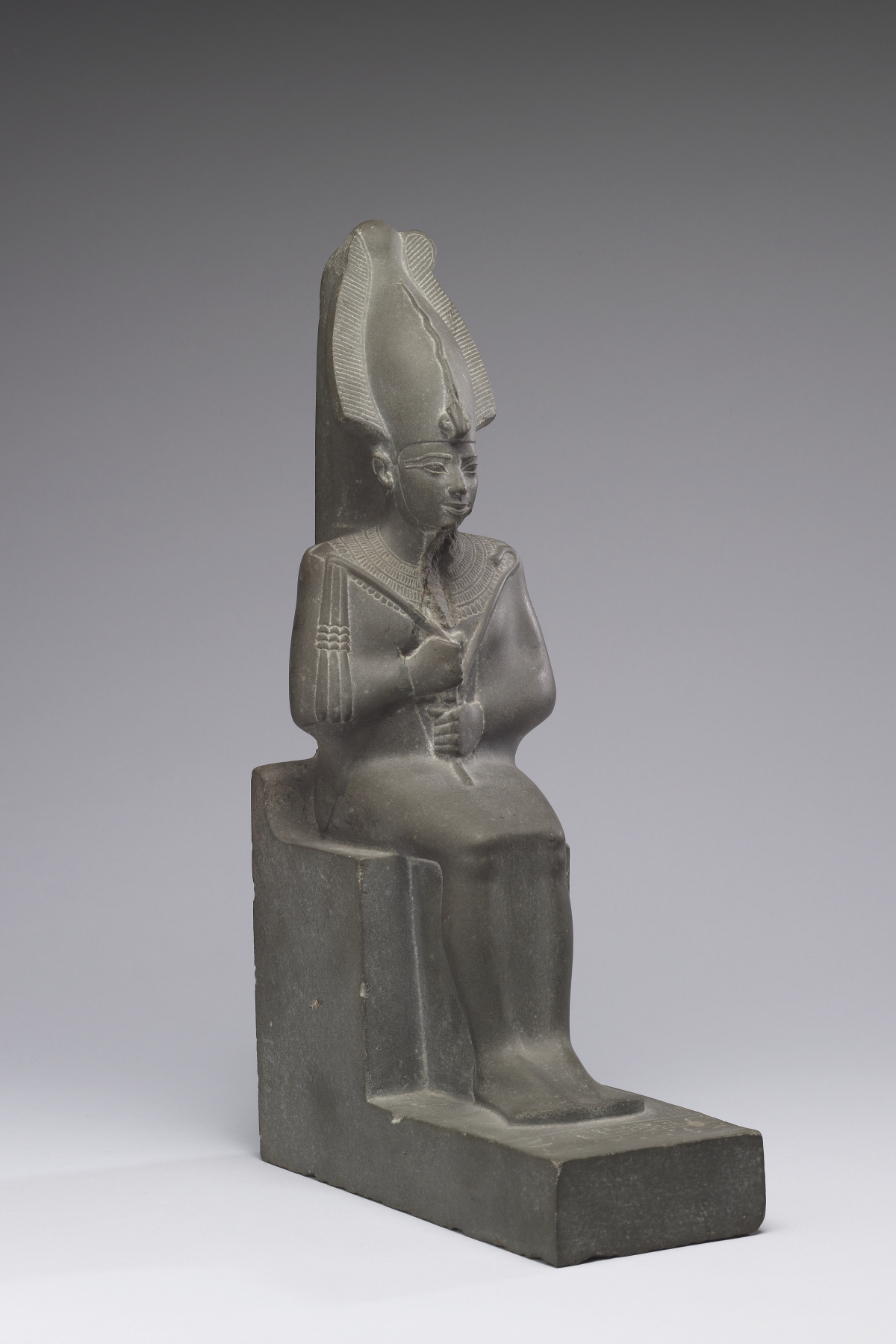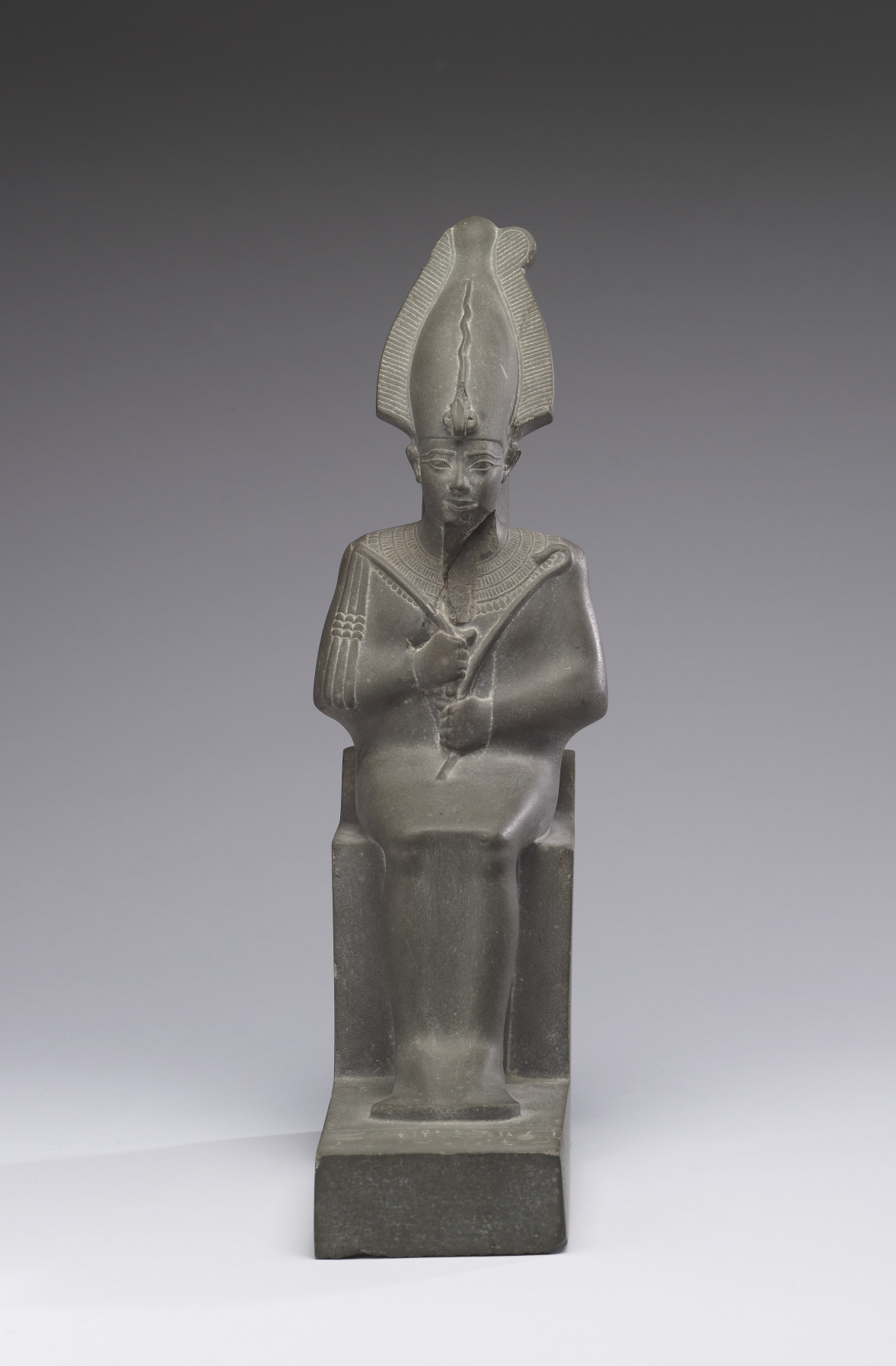Osiris, Lord of the Dead
(Ancient Egypt and Nubia )
This statue of Osiris seated was donated to a temple by an Egyptian official whose name is lost. The text on the base and back pillar contains a prayer to Osiris-Wennefer (eternally incorruptible), named as the son of Nut (the goddess of the sky), head of the gods, great god, and ruler of eternity. The crook and flail in his hands and the ritual "atef"-crown identify him as a former king, albeit a mythical one.
Provenance
Provenance (from the French provenir, 'to come from/forth') is the chronology of the ownership, custody, or location of a historical object. Learn more about provenance at the Walters.
Dikran Kelekian, New York and Paris [date and mode of acquisition unknown]; Henry Walters, Baltimore, 1909, by purchase; Walters Art Museum, 1931, by bequest.
Exhibitions
| 2013-2014 | Egypt’s Mysterious Book of the Faiyum. The Walters Art Museum, Baltimore. |
| 2008-2013 | Mummified. The Walters Art Museum, Baltimore. |
Conservation
| Date | Description | Narrative |
|---|---|---|
| Examination | Examined | |
| Examination | Examined in preparation for exhibition. | |
| 10/15/1998 | Examination | survey |
| 10/9/2008 | Treatment | technical analysis; cleaned; loss compensation |
Geographies
Egypt (Place of Origin)
Measurements
H: 15 3/4 x W: 3 15/16 x D: 9 5/8 in. (40 x 10 x 24.5 cm)
Credit Line
Acquired by Henry Walters, 1909
Location in Museum
Not on view
Accession Number
In libraries, galleries, museums, and archives, an accession number is a unique identifier assigned to each object in the collection.
In libraries, galleries, museums, and archives, an accession number is a unique identifier assigned to each object in the collection.
22.207






